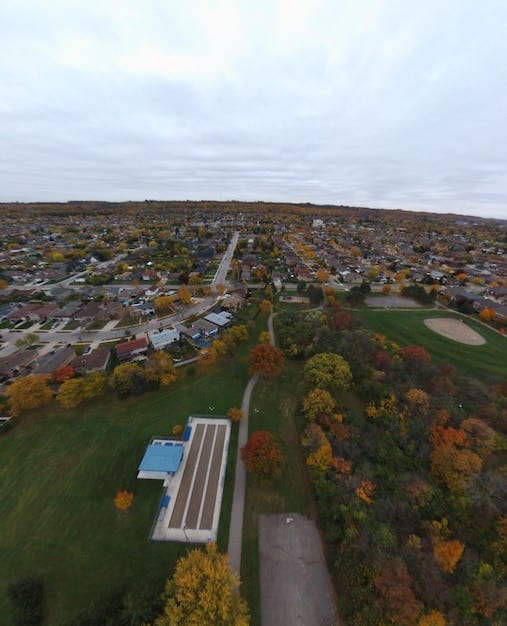VA Loan Eligibility 2025: Key Changes & Updates for Veterans

Understanding the Latest Changes to VA Loan Eligibility Requirements for 2025 involves staying informed about updates impacting veterans’ access to home loans, including modifications to service requirements, income qualifications, and property standards implemented by the Department of Veterans Affairs.
Navigating the world of home loans can be complicated, especially for veterans. Understanding the Latest Changes to VA Loan Eligibility Requirements for 2025 is crucial for those looking to utilize their benefits and achieve homeownership. We’ll break down what you need to know.
What is a VA Loan? A Brief Overview
VA loans are a type of mortgage loan in the United States guaranteed by the U.S. Department of Veterans Affairs (VA). They are available to veterans, active-duty service members, and eligible surviving spouses. These loans offer significant benefits, including no down payment requirements in many cases, no private mortgage insurance (PMI), and often more lenient credit score requirements compared to conventional loans.
But what makes them so special, and why are they a cornerstone of support for those who have served our nation?
Key Benefits of VA Loans
VA loans are attractive due to several financial advantages:
- No Down Payment: Many VA loans require no down payment, making homeownership more accessible.
- No PMI: Unlike conventional loans with low down payments, VA loans don’t require private mortgage insurance.
- Competitive Interest Rates: VA loans typically have lower interest rates than conventional mortgages.
- Easier Qualification: VA loans often have more flexible credit requirements than conventional loans.

VA loans are an incredible resource for veterans. By understanding the basics, you can be better prepared to navigate the eligibility requirements and take advantage of this valuable benefit.
Major Changes to VA Loan Eligibility for 2025
The landscape of VA loan eligibility is constantly evolving. Staying informed about the latest changes is crucial for veterans and active-duty service members planning to use their benefits in 2025. Several key adjustments are expected to shape the accessibility and terms of these loans.
So, what exactly are some potential major changes on the horizon?
Adjustments to Service Requirements
One area often subject to change is the minimum service requirement. The VA periodically reviews and adjusts the length of service needed to qualify for a VA loan. These adjustments may depend on factors such as the current military landscape and the needs of the veteran community.
Possible changes include:
- Minimum Active-Duty Service: Potential increases or refinements in the minimum active-duty service duration needed for eligibility.
- National Guard and Reserve Requirements: Adjustments to the required number of years of service for National Guard and Reserve members.
- Qualifying Periods of War: Modifications to the periods of war recognized for VA loan eligibility.
Staying updated on these changes is essential to ensure you meet the service requirements when applying for a VA loan in 2025.

Income and Credit Score Considerations
While VA loans are known for their flexibility, income and credit scores still play a significant role in the approval process. Lenders need to ensure borrowers can responsibly manage their mortgage payments.
The VA doesn’t set a minimum credit score but rather it is up to each individual lender.
Income Requirements
Lenders will assess your income to determine your ability to repay the loan. Key factors include:
- Debt-to-Income Ratio (DTI): Lenders will evaluate your DTI, comparing your monthly debt payments to your gross monthly income.
- Residual Income: The VA requires lenders to ensure borrowers have enough residual income after covering essential expenses and the mortgage payment.
Keeping your debt manageable and demonstrating stable income are crucial steps to strengthen your VA loan application.
The Impact of Property Standards on VA Loans
VA loans come with specific property requirements to ensure veterans purchase safe, sound, and sanitary homes. These standards protect veterans from investing in properties that could pose health or safety risks. Changes to these standards can affect which properties qualify for VA financing.
These rules ensure safety for our veterans.
Minimum Property Requirements (MPRs)
The VA has Minimum Property Requirements (MPRs) that all homes financed with VA loans must meet. Potential changes to these standards could include:
- Health and Safety Standards: Updates to requirements related to lead-based paint, asbestos, and other potential hazards.
- Structural Integrity: Revisions to standards ensuring the structural soundness of the property, including roofing, foundations, and electrical systems.
- Accessibility Standards: Adjustments to ensure the home is accessible to veterans with disabilities.
Staying informed about these MPRs is essential to ensure that the property you wish to purchase meets VA standards. If a property fails to meet these standards, it is likely it will not be approved for a VA loan.
VA Loan Funding Fee Adjustments
The VA loan funding fee is a one-time payment made by most veterans to help lower the cost of the loan for U.S. taxpayers. This fee can be financed into the loan amount, reducing the upfront costs for veterans. Changes to the funding fee can significantly impact the overall affordability of a VA loan.
Let’s see some examples!
Understanding the Funding Fee
The funding fee varies based on factors such as:
- Down Payment Amount: Higher down payments typically result in lower funding fees.
- Type of Loan: Different types of VA loans, such as purchase loans or refinance loans, may have different funding fee rates.
- Veteran Status: Certain veterans, such as those with service-connected disabilities, may be exempt from the funding fee.
Refinancing Options and the VA Loan
Refinancing a VA loan can be an excellent way to lower your interest rate, reduce your monthly payments, or tap into your home’s equity. Several refinancing options are available, and understanding the latest changes is crucial for making informed decisions.
Two popular options include the IRRRL and the Cash-Out Refinance.
VA Streamline Refinance (IRRRL)
The Interest Rate Reduction Refinance Loan (IRRRL), also known as a streamline refinance, allows veterans to refinance their existing VA loan to a lower interest rate. Potential updates may include:
- Eligibility Criteria: Changes to the requirements for IRRRL eligibility, such as the minimum amount the interest rate must be reduced.
- Documentation Requirements: Simplifications or adjustments to the paperwork needed for the IRRRL process.
The IRRRL can be a valuable tool for veterans looking to save money on their mortgage payments.
Seeking Expert Advice and Resources
Navigating the complexities of VA loan eligibility can be challenging. Seeking guidance from experienced professionals and utilizing available resources can help you make informed decisions and maximize your benefits.
It’s always good to have someone in your corner!
Consulting with VA Loan Specialists
VA loan specialists are experts in the VA loan process and can provide personalized guidance based on your unique circumstances. They can help you:
- Understand Eligibility Requirements: Determine if you meet the latest VA loan eligibility criteria.
- Navigate the Application Process: Assist you in completing the necessary paperwork and gathering required documentation.
- Find the Best Loan Options: Identify the VA loan products that best fit your needs and financial goals.
| Key Aspect | Brief Description |
|---|---|
| 🏠 Service Requirements | Potential adjustments to minimum active duty or National Guard/Reserve service times. |
| 💰 Income & Credit | Lenders evaluate Debt-to-Income Ratio and ensure sufficient residual income. |
| 🛡️ Property Standards | VA has Minimum Property Requirements concerning health, safety, and structural integrity. |
| 💸 Funding Fee | A one-time fee that veterans pay which can be affected by down payment amount and veteran status. |
Frequently Asked Questions (FAQ)
▼
Generally, eligibility extends to veterans, active-duty personnel, and certain surviving spouses who meet service requirements or other specific criteria set by the Department of Veterans Affairs.
▼
While the VA does not mandate a minimum credit score, most lenders require a score of 620 or higher to approve a VA loan application. It is best to check with you lender.
▼
One of the attractive features of VA loans is that they often do not require a down payment. This depends on the lenders discretion and other factors.
▼
Yes, a VA funding fee is typically required. The fee helps offset the cost of the loan program and is a percentage of the loan amount, which varies based on certain considerations.
▼
Yes, VA loans have refinancing options that can make the process of refinancing a great idea. You can use the IRRRL or even a Cash out refinance.
Conclusion
Staying informed about the upcoming changes to VA loan eligibility requirements for 2025 is essential for veterans and service members looking to utilize their home loan benefits. By understanding potential adjustments to service requirements, income qualifications, property standards, and funding fees, and exploring refinancing options, veterans can make informed decisions and achieve their homeownership goals.





